Tanzania has diverse landscapes that attract different species of animals, which is why it is one of the greatest places to see these amazing animals in their natural habitat. The country is diverse with a number of National Parks where you can see wildlife in their natural environment. One of the most coveted experiences for any animal lover when travelling to Tanzania is to see the Big Five in their natural habitat.
*This post may contain affiliate links, as a result, we may receive a small commission (at no extra cost to you) on any bookings/purchases you make through the links in this post. As an Amazon Associate, we earn from qualifying purchases. Read our full disclosure
The Origin of the Term Big Five
The term “Big 5” has unfortunate origins in the 19th and early 20th centuries, when hunting was hugely commonplace in Africa. This list was not primarily based on the size of the animals, but on the dangers and difficulty in hunting them.
Today, this name is associated with catching a glimpse of these animals in their natural environment, in National Parks where wildlife protection has become of utmost importance. These parks are dedicated to controlled, responsible tourism to ensure that we will not be the last generation to see these precious creatures in their natural environment.
Best Time to Visit Tanzania to see the Big Five
Visiting Tanzania is a rewarding experience at any time of year, but when it comes to seeing wildlife in their natural environment, it’s important to book your holiday to coincide with the dry season.
Dry Season
The best time to spot many of the animals in Tanzania is the dry season, which is between July and October. This is peak safari season for several reasons. For one, this is Tanzania’s winter, which is cool and dry. The lack of rain dries up the vegetation and thins out the tall grass, which makes it a lot easier to spot the animals.
This dry season also means that many water sources like ponds, streams and puddles dry up. This forces many of the animals to congregate near the remaining lakes and rivers, which makes it easier to spot them without having to cover so much ground. Although visiting any time of year will have its incredible rewards, for prime wildlife viewing, the dry season is definitely best.
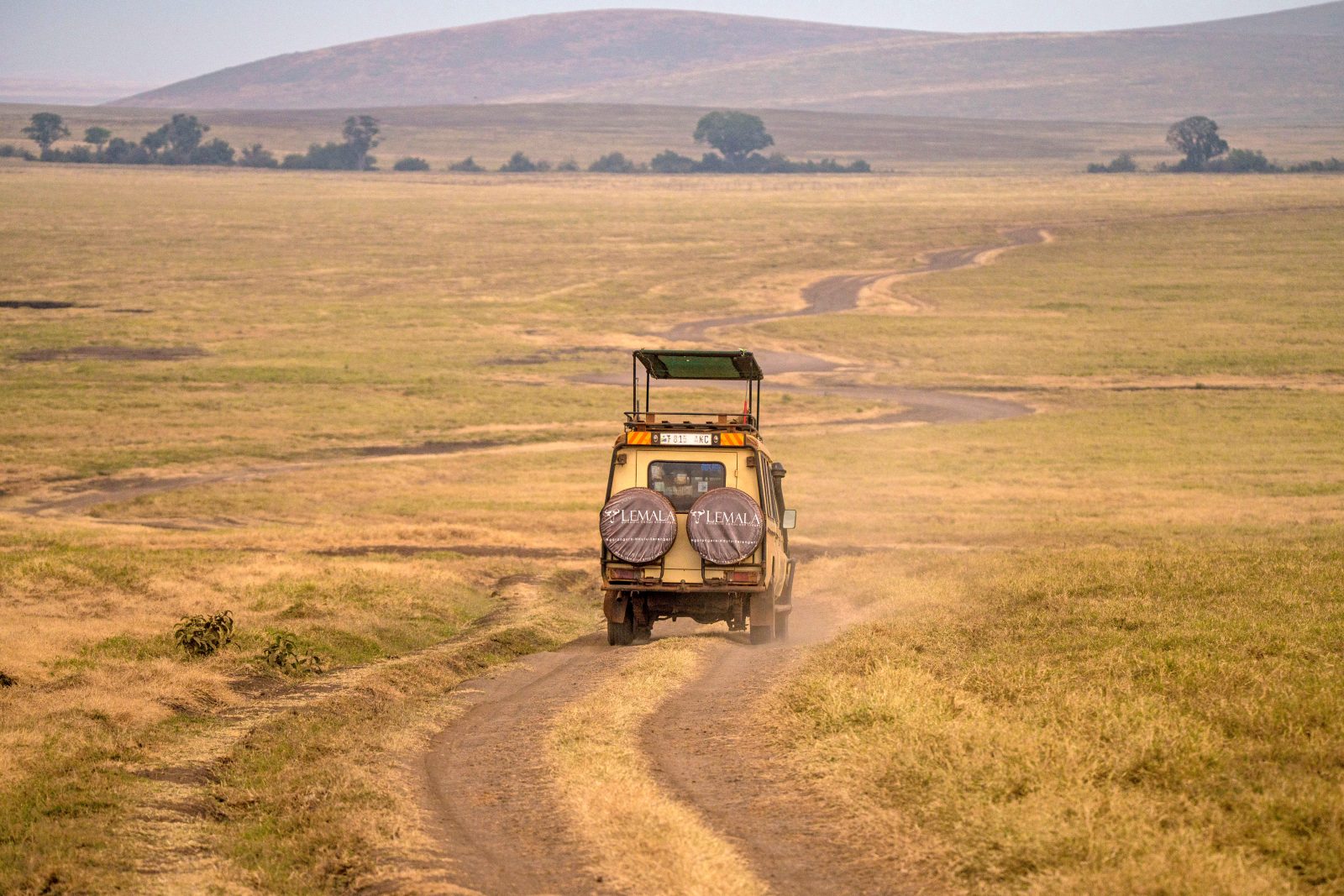
Traveling Soon? Here is a list of our favourite travel providers and accessories to help get you ready for your upcoming trip!
Where to Spot the Big Five in Tanzania
African Elephant
The best place in Tanzania to spot elephants is in the Tarangire National Park. This park has the largest elephant population in Tanzania, with many herds having several-hundred members. The best time of the year to see the elephants in the dry season, because many of the herds congregate by the Tarangire River. At this time of the year, the river is the only reliable source of water for miles around.
One interesting thing about the elephants in this area is that over time, they have developed a unique ability to deal with anything from a dry spell to a severe drought. The Elephants use receptors in their trunks to locate water running just under the dry surfaces. Using their incredibly strong trunks and their tusks, they then dig into the ground to access the water. This is known as “sand drinking”, an especially wonderful sight to see is the young elephants learning to dig for water by watching their elders.
An added bonus is that this digging works to help the surrounding animals who aren’t equipped with these abilities to also make use of the makeshift wells once the elephants have moved on. So the animal watching can continue.
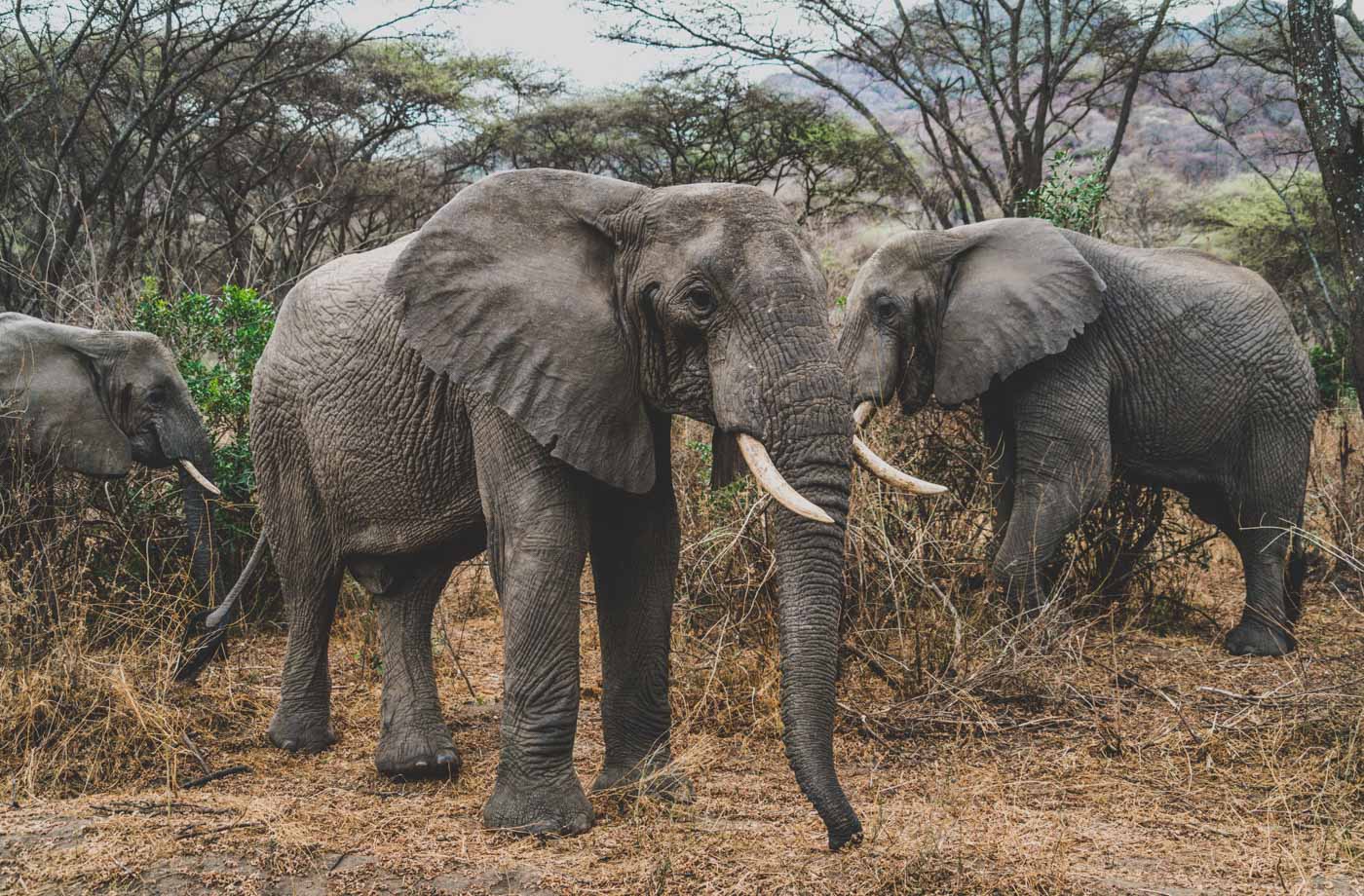
African Buffalo
Buffalo congregate together near bodies of water in the dry season. During the rainy season, herds are constantly moving in search of fresh grazing, and although watching them move in herds is also an incredible sight to behold, watching them gather near water is very rewarding. It is also possible to catch interactions with lions at this time. The buffalo are very protective of each other, and herds will often surround weak members or calves, so these moments can be quite dramatic. The most common national parks to spot the buffalo at this time will be in watering holes and rivers throughout the Serengeti and near the Great Ruaha River (Ruaha National Park).
If you do happen to catch the buffalo during migration for fresh grazing, this is also an overwhelming and stunning spectacle. The herds move in massive motion together, and their heavy bodies make the ground shake, which must be experienced to be believed.
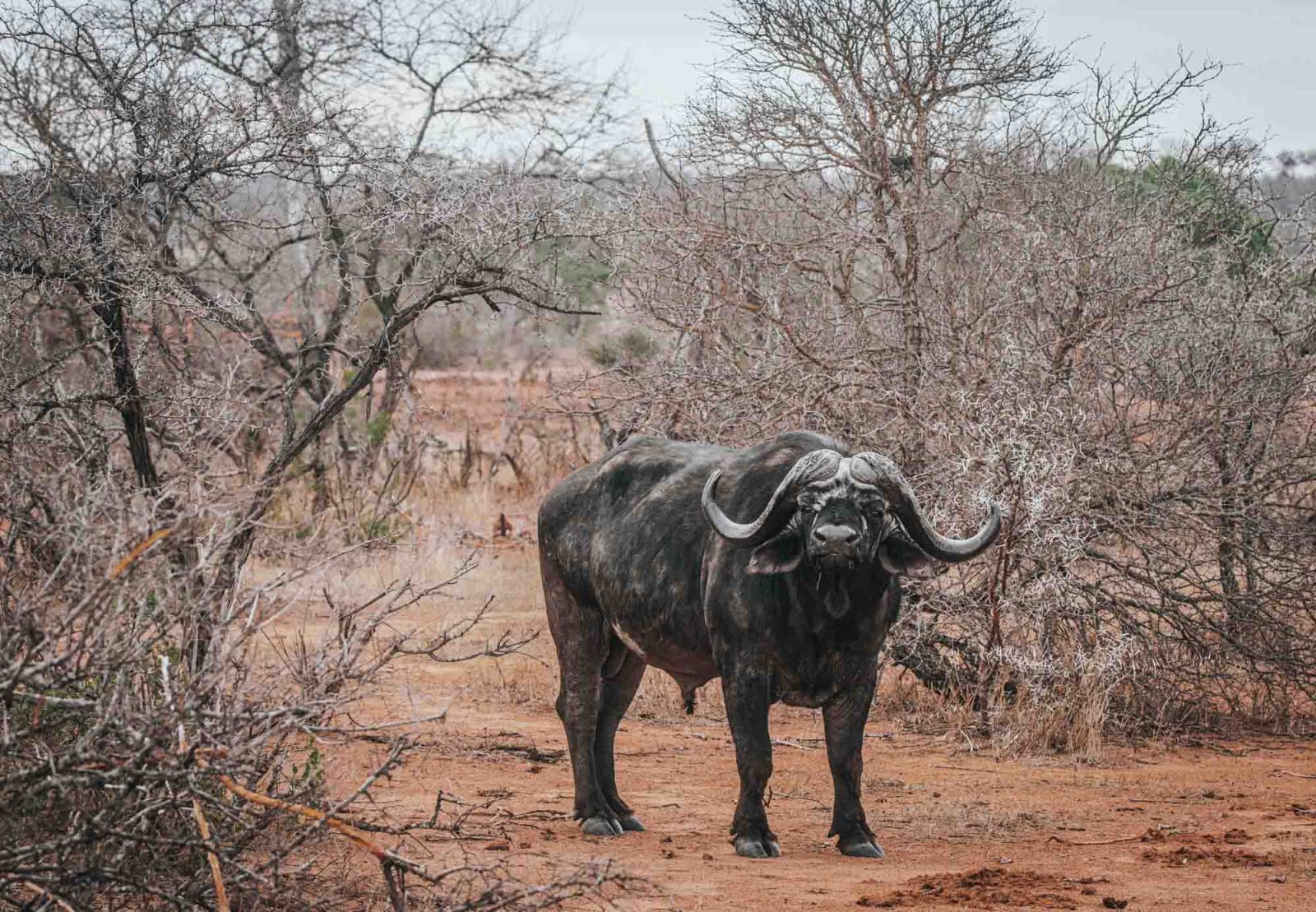
Rhinoceros
Rhinos can range in different colours from either grey to brown, and it is actually the shape of their upper lip that determines their subspecies. White rhinos have a broad and square upper lip, and black rhinos have a pointier upper lip. These prehistoric heavy hitters are perhaps one of the most difficult animals to spot throughout the entire continent of Africa, not just in Tanzania.
Unfortunately, their horns are worth a lot to poachers, and despite efforts to protect them by the national parks, many rhinos continue to be poached in Tanzania on an annual basis. Despite that, rhinos can definitely still be seen in the wild in Tanzania. One of the best spots to spot black rhinos is the Ngorongoro Crater. The population that does still roam here spends most of the day grazing in open grassland.
The Mkomazi National Park and their rhino sanctuary (Mkomazi Rhino Sanctuary) also have ongoing efforts to deter poachers and engage in fundraising and sponsorships to ensure that the existing population can thrive. Mkomazi is located on the north-eastern border with Kenya.

Lion
Lions are especially social animals, and you can often spot prides together throughout the Serengeti. A pride will consist of cubs, related females and a handful of male lions. The female lions are the most avid hunters in the pride and in general, do their hunting at night. Usually, night safari tours are only available privately and are not available in every National Park. However, spotting the action right at dusk or dawn is very likely.
Although the idea of spotting lions on the prowl sounds amazing, there is a high chance you will spot these felines lounging under a tree, since they rest for about 20 hours a day. There are many large prides to be found within the Serengeti. And as with the rest of the animals mentioned, the likelihood of seeing them in action or on the hunt is much higher in the dry seasons around bodies of water where prey tends to congregate.
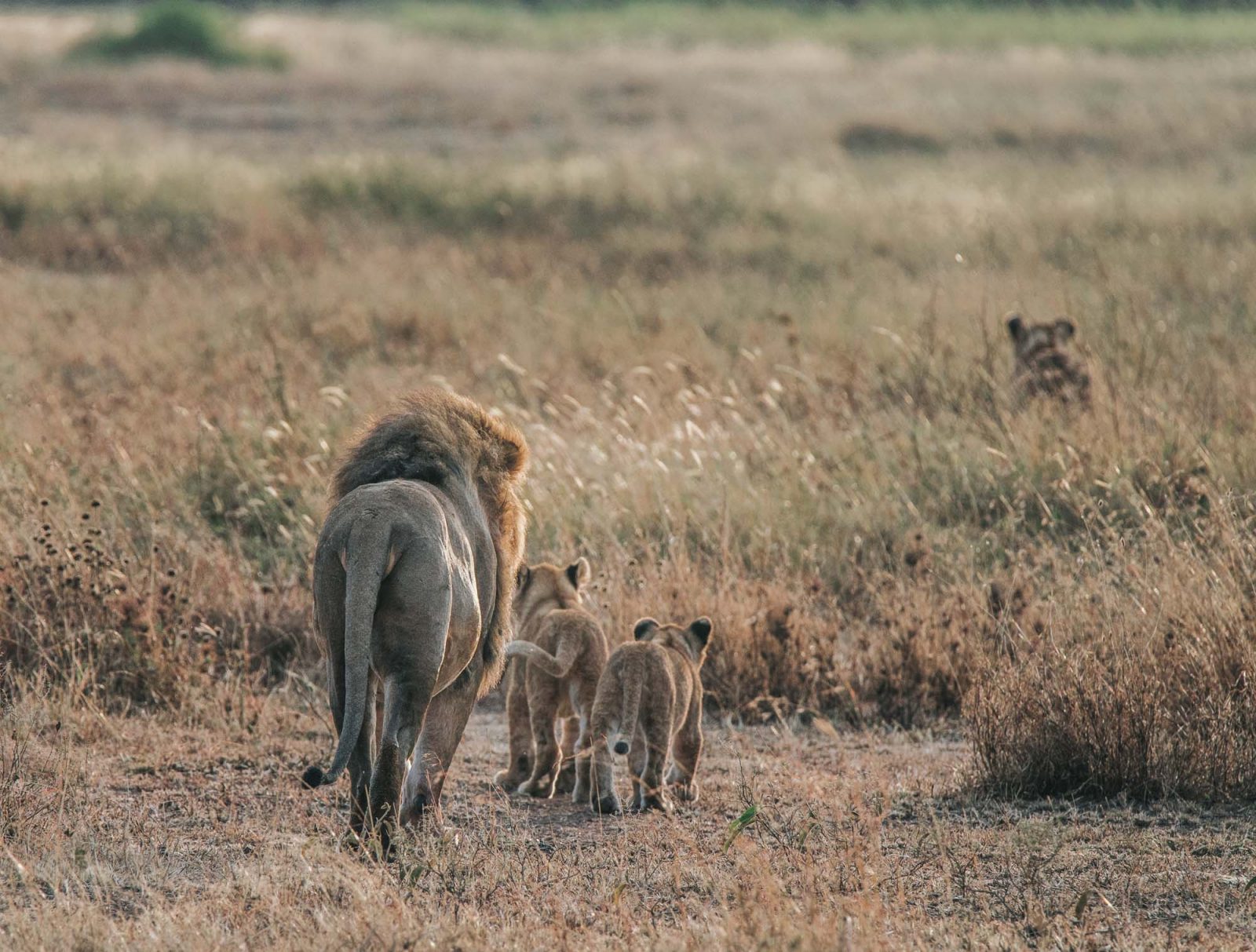
Leopard
In terms of population numbers, the rhino is officially the most difficult to see of the Big Five, but it is the leopard that is the most elusive to spot in the wild. This is for a variety of reasons. Leopards are masters of camouflage and unlike the other feline on this list, the lion, leopards are not very social, and in fact, are rather solitary. They spend most of their time hiding in the treetops, so trees become the most likely spot to spot a leopard on a safari. They are strong enough to drag their prey back up to the trees once caught to ward off other predators. When female leopards have cubs, they tend to be more active during the day, since more food is needed to feed the cubs.
The dry season is obviously the best time to spot the leopards because of the dried-out foliage in the trees. The Mara-Serengeti ecosystem is unrivalled when it comes to spotting big cats. Spotting the leopards up in the sausage trees of the Seronera Valley is a sight you might never forget. If the leopard is the animal that you would love to see most, be sure to let your guide know, as they may have information about sightings and typical spots to see them.
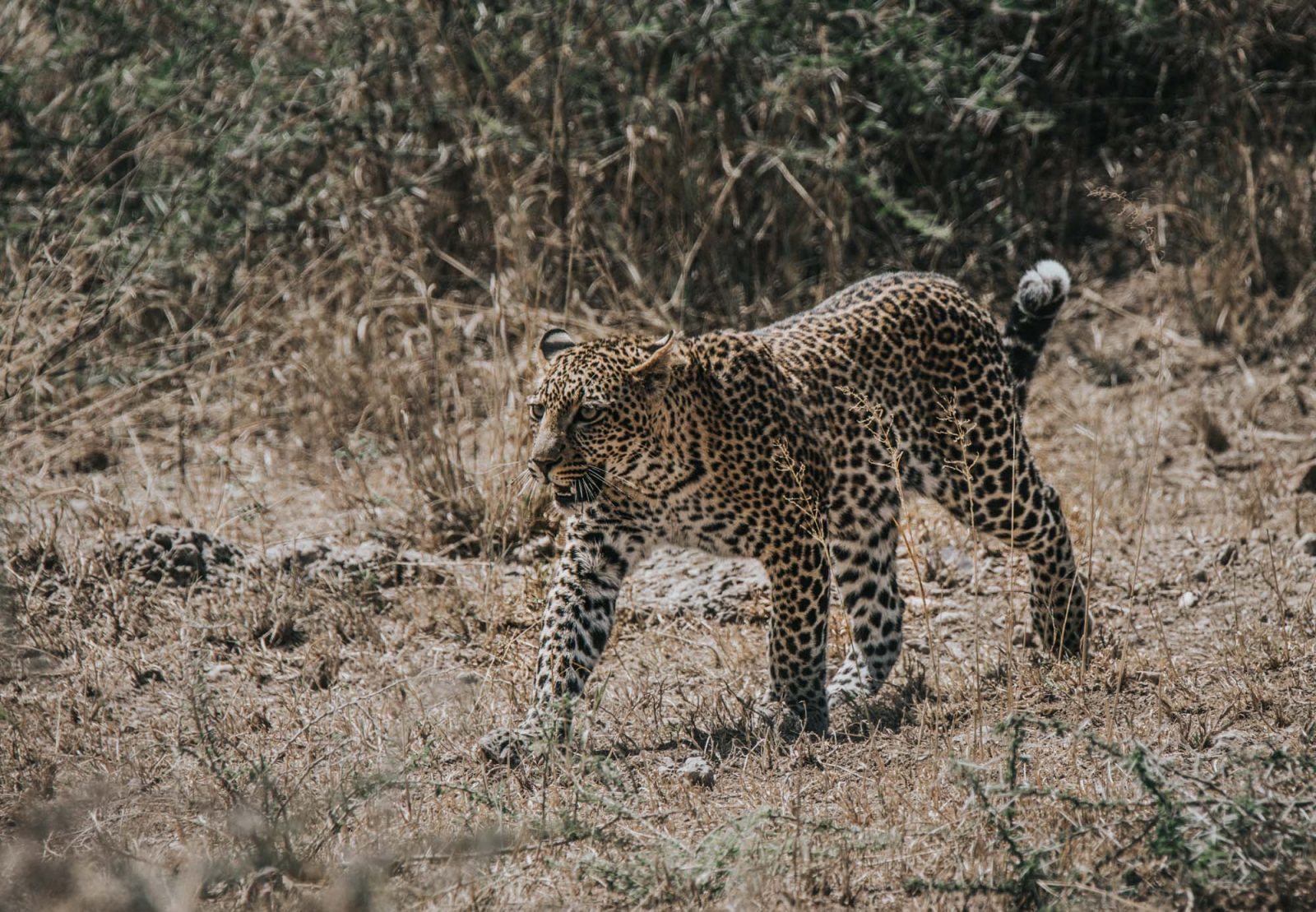
Planning a Trip to Tanzania
So when planning your holiday, it is helpful to know when the best time to travel there is and to make sure you have your Tanzania visa before you leave. The Tanzania visa is easy to apply for online and only takes a handful of minutes to fill in. If this holiday is something you would like to experience with the whole family, you can apply for several visas at once on the same application. This saves you time, as you only have to fill in your travel details once and pay the visa once. Don’t forget that you must have your Tanzania visa ahead of time as some nationalities can not obtain a visa upon arrival in Tanzania.
When applying for the Tanzania visa, you also have the option to purchase CO₂ credits to offset the flight. The distance of the flight is taken into consideration when factoring what amount will be charged. This is a choice and not mandatory, but a good step towards ensuring that you start the holiday responsibly.

